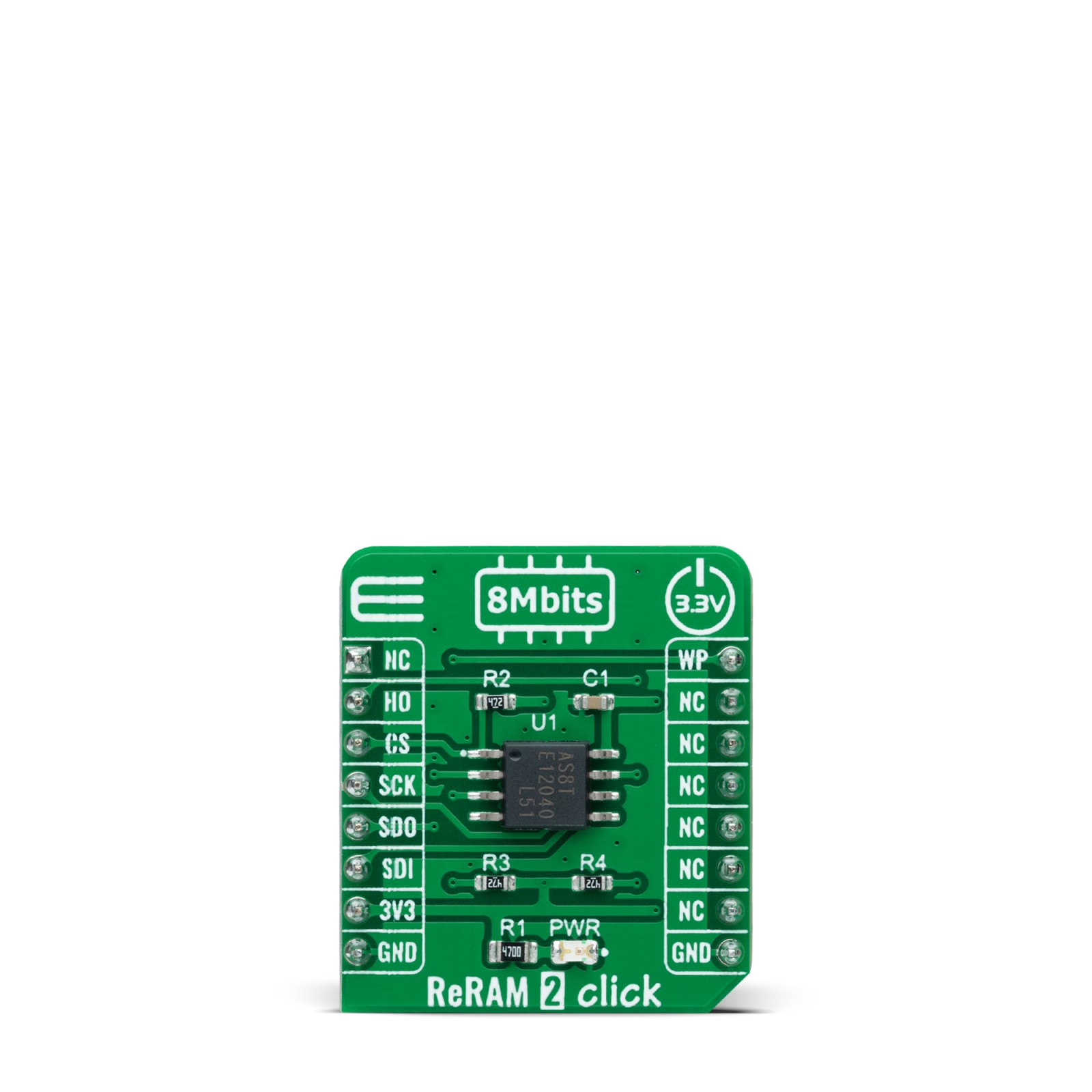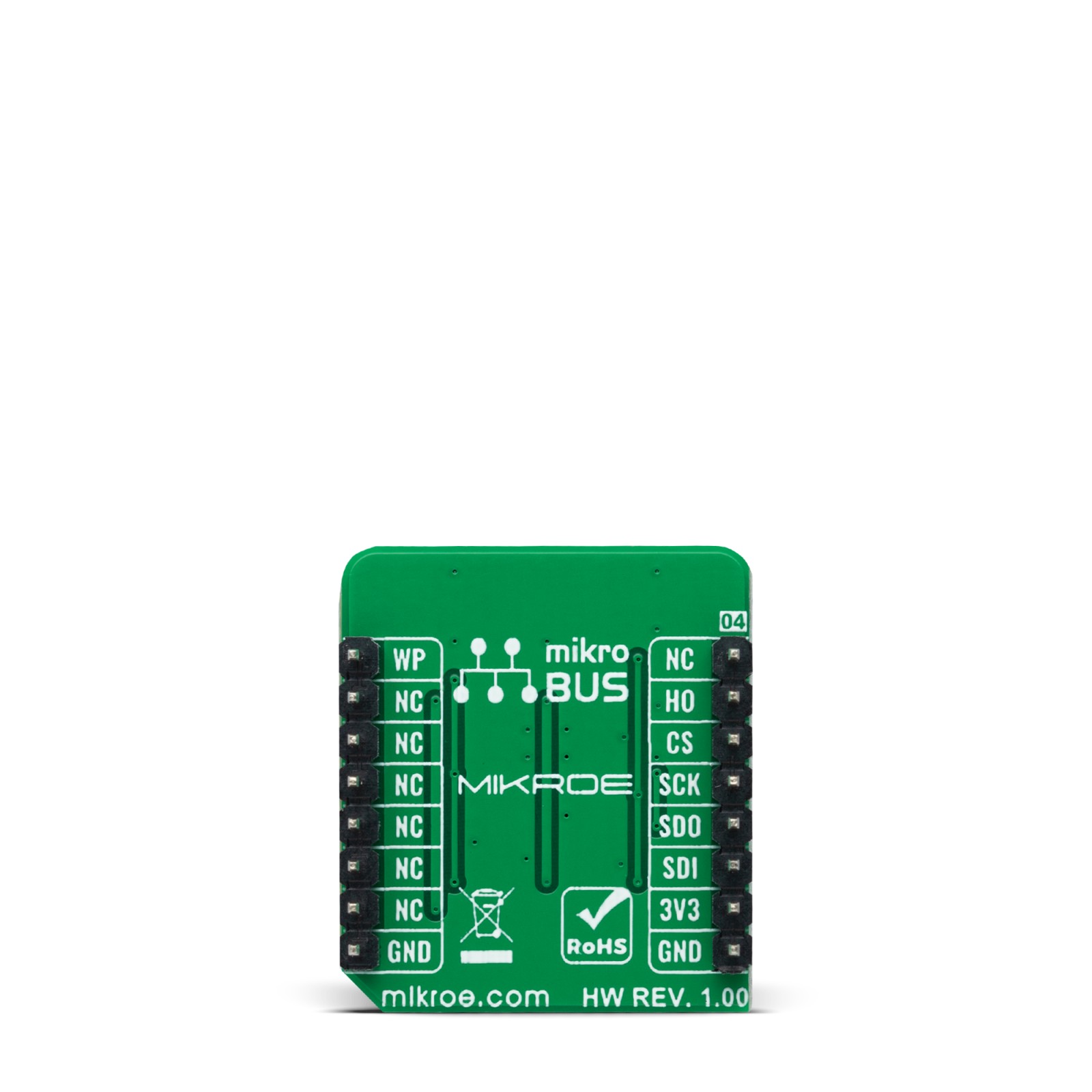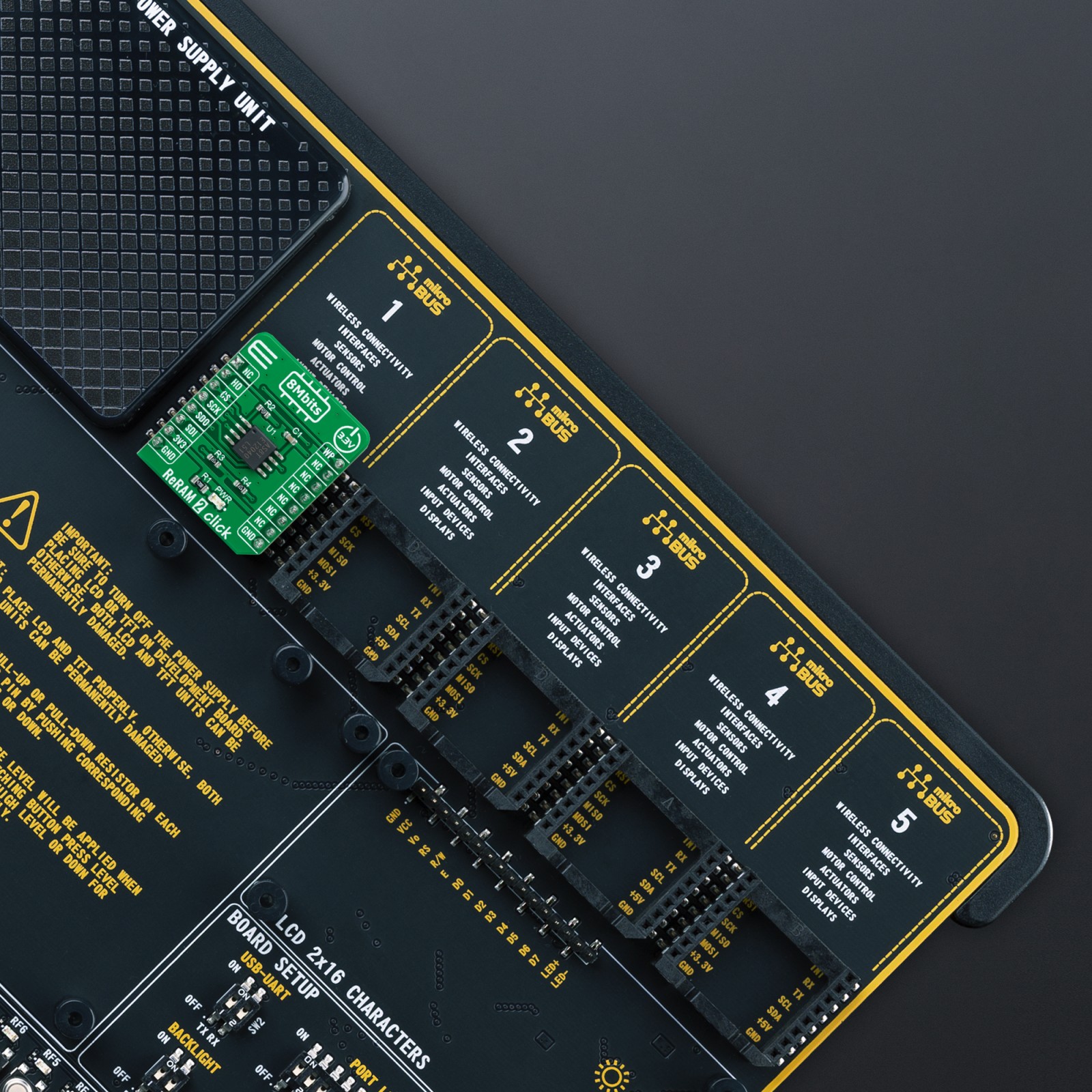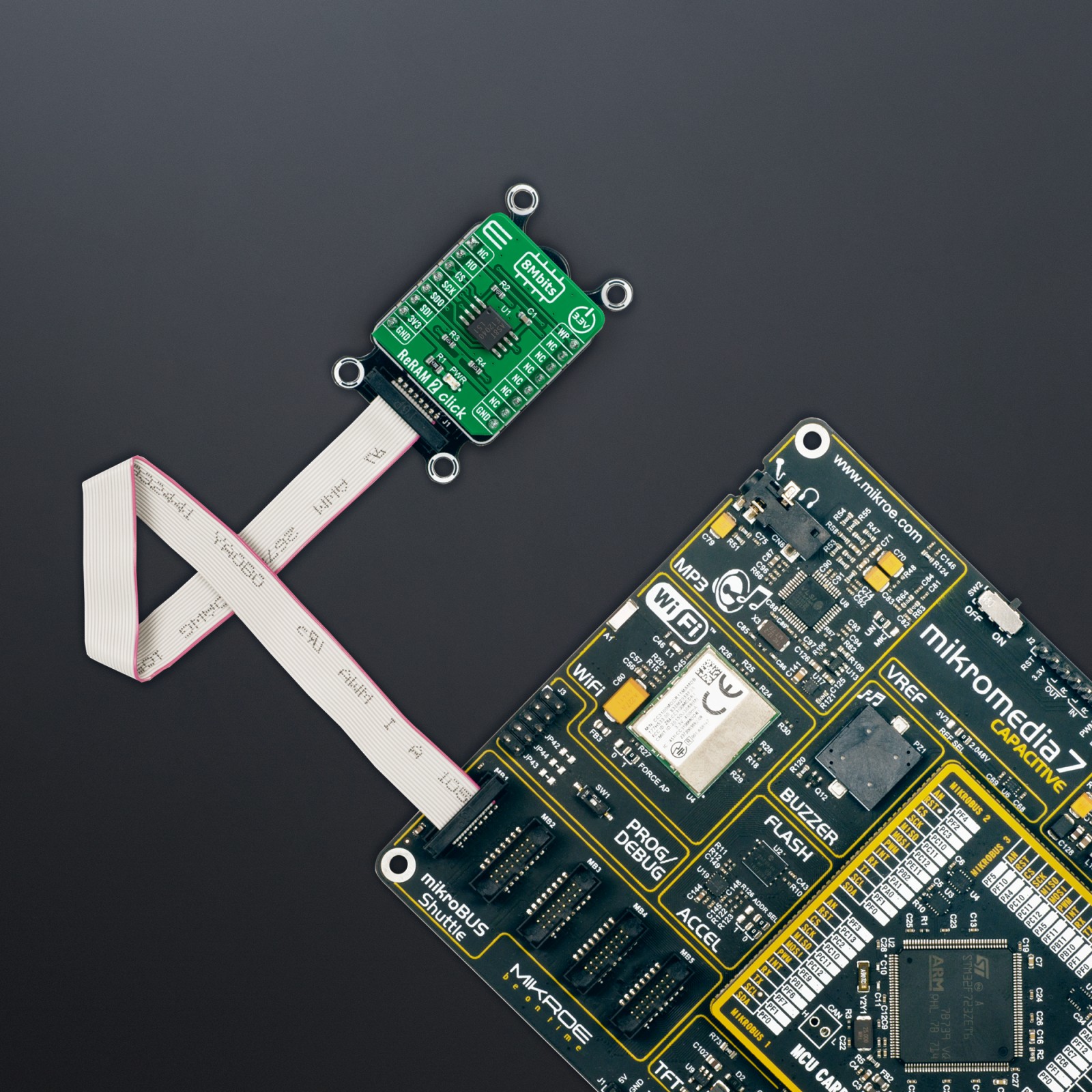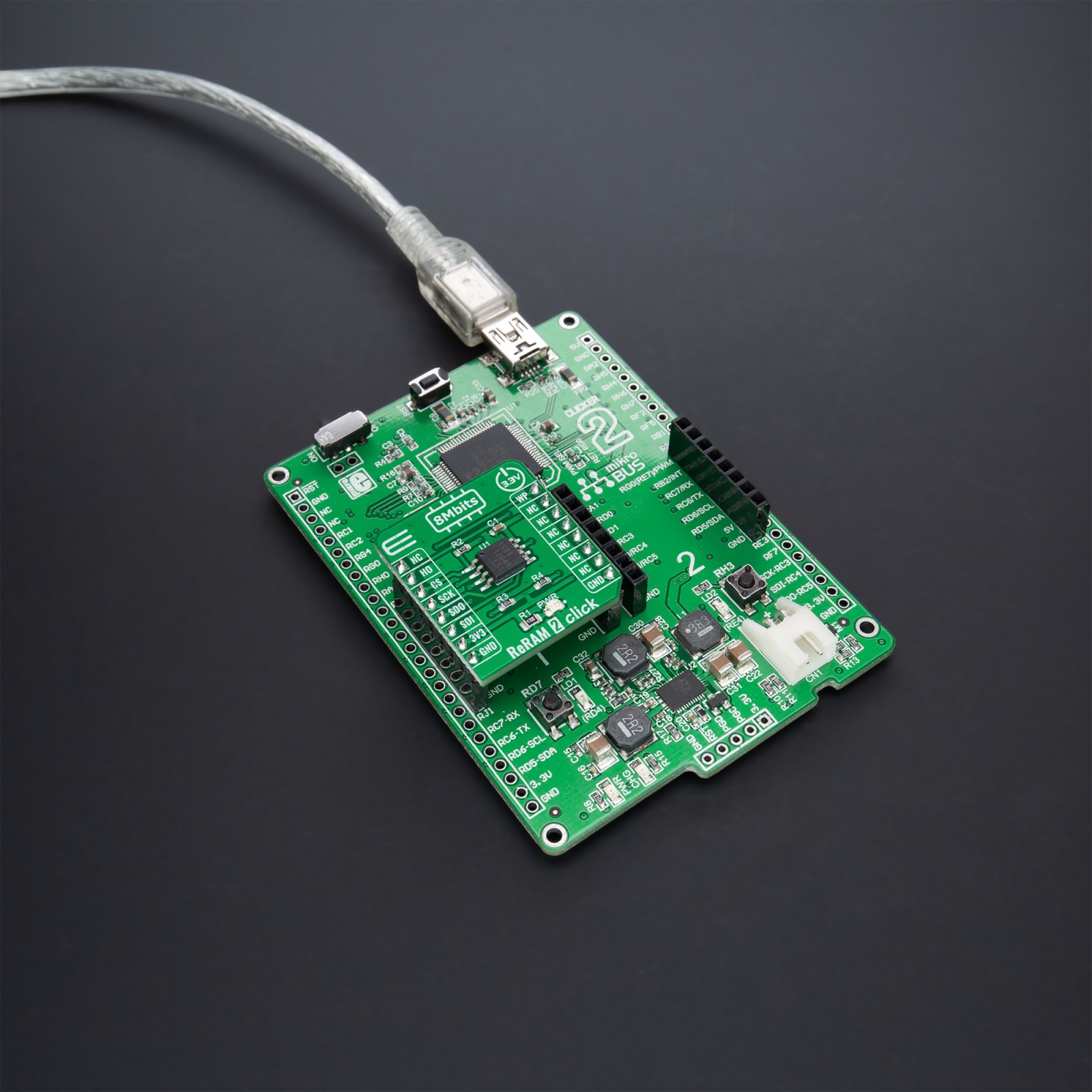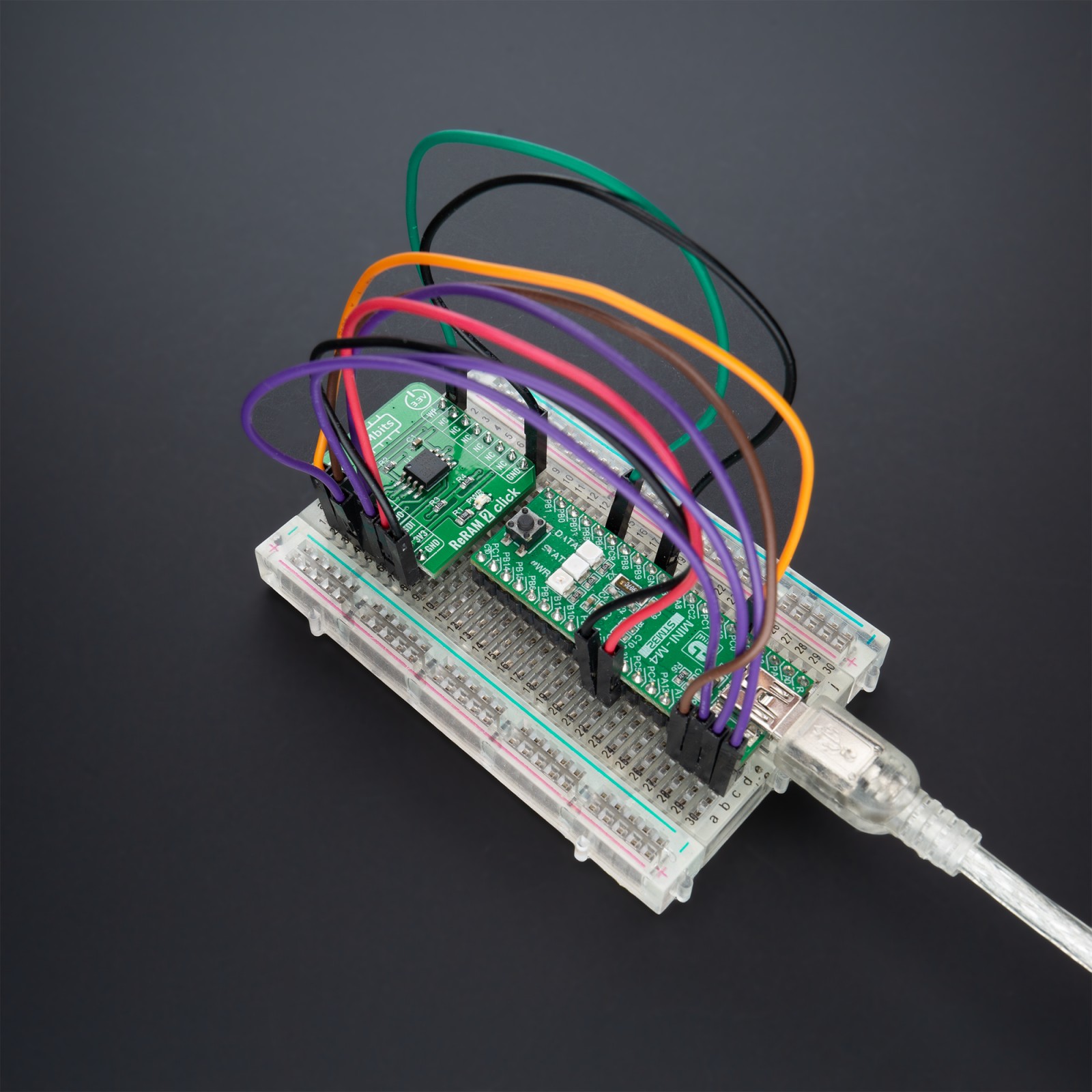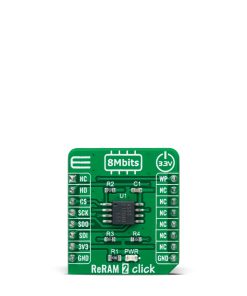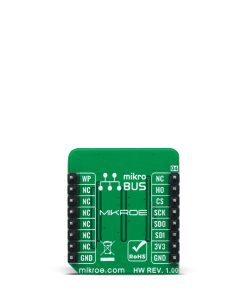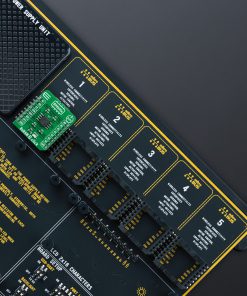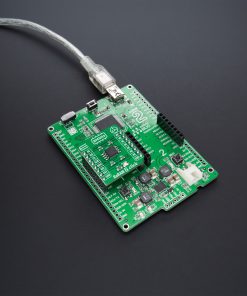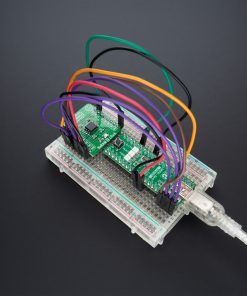ReRAM 2 Click
R410.00 ex. VAT
ReRAM 2 Click is a compact add-on board containing highly reliable resistive random-access memory. This board features the MB85AS8MT, an 8Mbit memory organized as 1,048,576 words of 8 bits from Fujitsu Semiconductor. The MB85AS8MT uses the resistance-variable memory process and silicon-gate CMOS process technologies to form nonvolatile memory cells. This SPI configurable ReRAM can withstand many write cycles (1×106 rewrite operations), has a data retention period greater than ten years, and can read and write to random addresses with very negligible delay. This Click board™ is ideal as a nonvolatile storage media or temporary RAM expansion for storing variables in any embedded application that requires rapid writes and unlimited endurance.
ReRAM 2 Click is supported by a mikroSDK compliant library, which includes functions that simplify software development. This Click board™ comes as a fully tested product, ready to be used on a system equipped with the mikroBUS™ socket.
Stock: Lead-time applicable.
| 5+ | R389.50 |
| 10+ | R369.00 |
| 15+ | R348.50 |
| 20+ | R335.38 |

